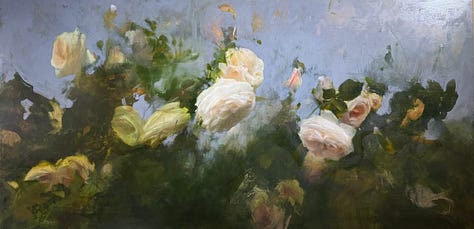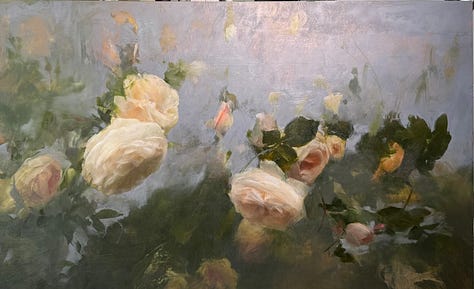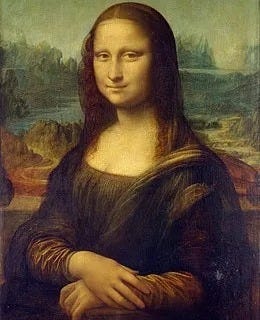Thanks for reading The Bricklayer's Daughter! If it doesn’t already say “subscribed” below, you can enter your email and hit the “subscribe” button to sign up for these free, short, bi-weekly essays. If you want to get off this list, just hit “unsubscribe” at the bottom of this message.
Isn’t it interesting how siblings can be born 18 months apart, grow up in the same house, with the same parents, yet take such divergent paths in life? That was my younger sister Kathy and me. We’re great friends, and we share so much—our progressive values, our childhood memories, and our work ethic (thanks to our late parents and the nuns who taught us as kids). But we are very different people in many ways too. Kathy is a fabulous, internationally-known artist. The minute you finish reading this essay, you should click on her website to see what I mean and join the over 18,000 people who follow her on Instagram. It wasn’t really until I embarked on this “encore career” of mine, writing fiction, that I fully realized how much her lifelong journey has inspired my own. We now have vast new landscapes to explore in talking about the artistic process and creating stories from a blank canvas or a blank page.
A few weeks ago, Kathy posted a story about her talented carpenter husband Parker taking a table saw to a work-in-progress that was giving her fits. She’d been working on a large painting but saw the core of it in her mind’s eye, so decided to keep only that part and physically CUT OFF the rest of the painting. This blew my mind, so I called her about it. She talked to me about the “Golden Rectangle” and the “Fibonacci Sequence” (which I vaguely remembered from the Da Vinci Code). I’d recently watched the Ken Burns documentary on PBS about Leonardo, king of the golden ratio, so had just enough knowledge of all that to be dangerous. Then she showed me how the “before and after” made such a huge difference, and it clicked into place. “Really,” my sister said, “90% of art is doing things you think are wrong, then fixing them.” Pretty profound.



The more we talked, the more I saw the parallels to writing. The time-tested principles of balance, proportion, and harmonious flow that underly great works of visual art can also be applied to literature. Sometimes we fall in love with a plot line, a character, a scene, or some fascinating tidbit from our backstory research, and the “core” of our story—what truly matters—gets lost.* We’re blinded by love for these preconceived notions, then we get stuck because we can’t connect them to the actual story. That’s when it’s time to find a reliably honest beta reader, a trusted developmental editor, or a critique partner. Find out what fits and what doesn’t. And I’d say, the earlier in your process you step back from your work and ask for that help, the better. Either that or find a friend with a table saw.

*I plead guilty. There’s a whole “nerd appendix” of related links on my website for The Italian Prisoner if you want to retrace some of my journeys down research rabbit holes.




The visual image of what she cut off was so helpful! And this is just what I needed to hear as I get ready to head to brunch with a computer and piece on progress in hand! 💛
Wow this was so inspiring!! It really is crazy how I will cling to things in a story just because I already wrote them, when really I should just take a saw to those parts and let the really good parts shine. Thanks for this lesson Elisa!